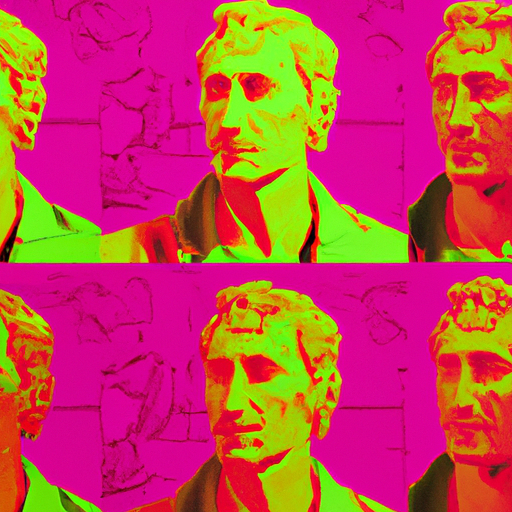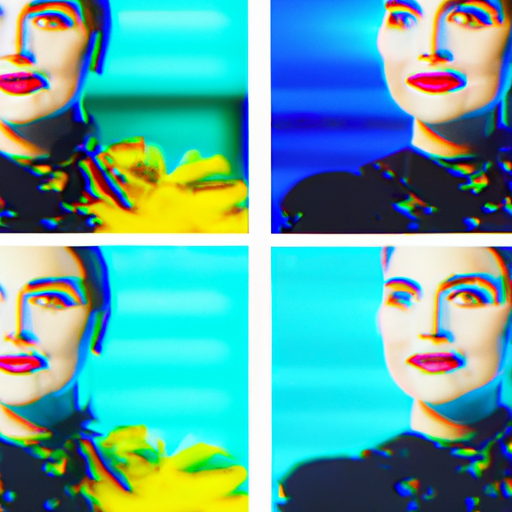
-
Table of Contents
- Mastering Texture Mapping in 3D Graphic Design
- Understanding Texture Mapping
- The Importance of Texture Mapping
- Mastering Texture Mapping Techniques
- 1. Understand the Anatomy of Textures
- 2. Create or Source High-Quality Textures
- 3. Pay Attention to UV Mapping
- 4. Experiment with Different Mapping Techniques
- Case Study: Texture Mapping in Video Games
Mastering Texture Mapping in 3D Graphic Design

Texture mapping is a fundamental technique in 3D graphic design that allows artists to add realistic details and depth to their creations. By applying textures to the surfaces of 3D models, designers can create lifelike representations of objects, environments, and characters. In this article, we will explore the concept of texture mapping, its importance in 3D graphic design, and provide valuable insights and tips for mastering this technique.
Understanding Texture Mapping
Texture mapping is the process of applying a 2D image, called a texture, onto the surface of a 3D model. This technique allows designers to add intricate details, such as color, patterns, and surface characteristics, to their models. By mapping the texture onto the model’s surface, the 3D object becomes visually more appealing and realistic.
Texture mapping involves three key components:
- UV Mapping: UV mapping is the process of unwrapping the 3D model’s surface onto a 2D plane. This creates a flat representation of the model’s surface, which can then be used as a canvas for applying the texture.
- Texture Coordinates: Texture coordinates are the mapping between the 2D texture and the 3D model’s surface. These coordinates determine how the texture is applied to the model, ensuring that it aligns correctly with the model’s geometry.
- Texture Image: The texture image is a 2D image that is applied to the 3D model’s surface. It can be created from scratch or sourced from photographs or other reference materials.
The Importance of Texture Mapping
Texture mapping plays a crucial role in 3D graphic design for several reasons:
- Realism: Texture mapping adds realism to 3D models by simulating the appearance of real-world materials. By applying textures that mimic the properties of different surfaces, such as wood, metal, or fabric, designers can create visually convincing and immersive environments.
- Detail and Depth: Texture mapping allows designers to add intricate details and depth to their models. By applying textures with fine details, such as scratches, bumps, or wrinkles, designers can make their models look more lifelike and visually interesting.
- Visual Communication: Texture mapping helps convey information and communicate the intended message of the design. For example, a rough and weathered texture can indicate an old and worn-out object, while a smooth and glossy texture can suggest a modern and sleek design.
Mastering Texture Mapping Techniques
Mastering texture mapping requires a combination of technical skills and artistic sensibility. Here are some valuable insights and tips to help you improve your texture mapping skills:
1. Understand the Anatomy of Textures
Before diving into texture mapping, it is essential to understand the anatomy of textures. Textures consist of various components, including color, bump maps, specular maps, and displacement maps.
Color Maps: Color maps define the base color of the texture. They determine the overall appearance and hue of the surface.
Bump Maps: Bump maps simulate the small surface imperfections, such as bumps or dents, by altering the surface normals. They add depth and detail to the texture without modifying the actual geometry of the model.
Specular Maps: Specular maps control the reflection of light on the surface. They define the shininess and reflectivity of the material, allowing designers to create surfaces that range from matte to highly reflective.
Displacement Maps: Displacement maps modify the geometry of the model by displacing the vertices based on the grayscale values of the texture. They can create complex surface details, such as wrinkles or fur.
2. Create or Source High-Quality Textures
The quality of textures greatly impacts the final result of texture mapping. Creating or sourcing high-quality textures is crucial for achieving realistic and visually appealing results. Here are some tips for creating or sourcing textures:
- Create Textures: If you have the necessary skills, creating your own textures can give you full control over the desired look and feel. You can use software like Adobe Photoshop or Substance Painter to create textures from scratch or modify existing ones.
- Source Textures: Alternatively, you can source textures from various online platforms that offer high-quality texture libraries. These platforms provide a wide range of textures, including materials, surfaces, and patterns, which can save you time and effort.
3. Pay Attention to UV Mapping
Proper UV mapping is crucial for successful texture mapping. Here are some tips to ensure effective UV mapping:
- Minimize Distortion: Avoid stretching or distorting the UV map as it can result in distorted textures on the 3D model. Aim for even distribution of UV islands and maintain proper proportions.
- Utilize Seam Placement: Strategically place seams on the UV map to minimize their visibility on the 3D model. This can be achieved by placing seams in less noticeable areas or areas that can be easily hidden.
- Utilize UV Space: Efficiently utilize the UV space by packing UV islands closely together. This helps maximize the resolution of the textures and reduces wasted space.
4. Experiment with Different Mapping Techniques
Texture mapping offers various techniques that can be used to achieve different effects. Experimenting with different mapping techniques can help you discover new possibilities and enhance your creativity. Some popular mapping techniques include:
- Planar Mapping: Planar mapping projects the texture onto the model from a single direction. It is useful for objects with flat surfaces, such as walls or floors.
- Spherical Mapping: Spherical mapping wraps the texture around the model as if it were projected onto a sphere. It is suitable for objects with a spherical or curved shape, such as planets or balls.
- Cylindrical Mapping: Cylindrical mapping wraps the texture around the model as if it were projected onto a cylinder. It is ideal for objects with a cylindrical shape, such as bottles or columns.
- Box Mapping: Box mapping projects the texture onto the model from six directions, simulating a cube. It is commonly used for objects with box-like shapes, such as buildings or rooms.
Case Study: Texture Mapping in Video Games
Texture mapping
